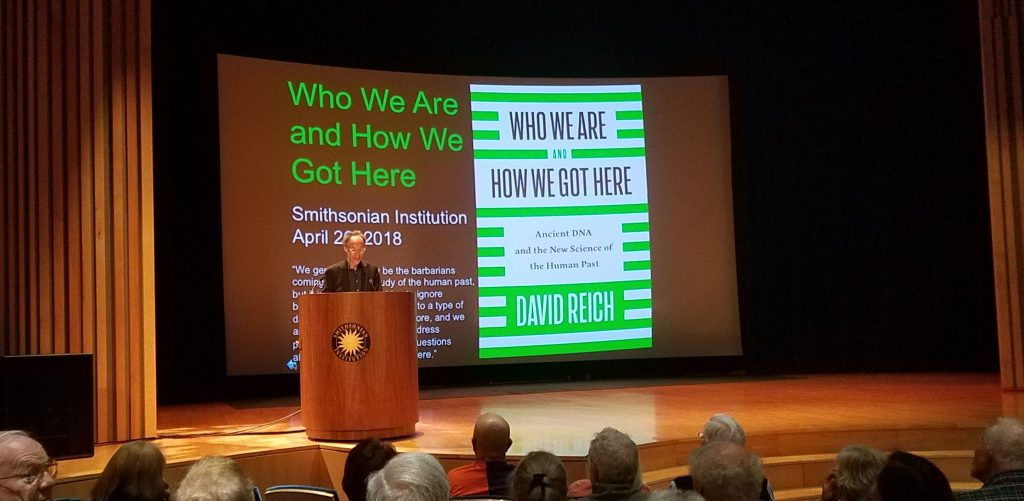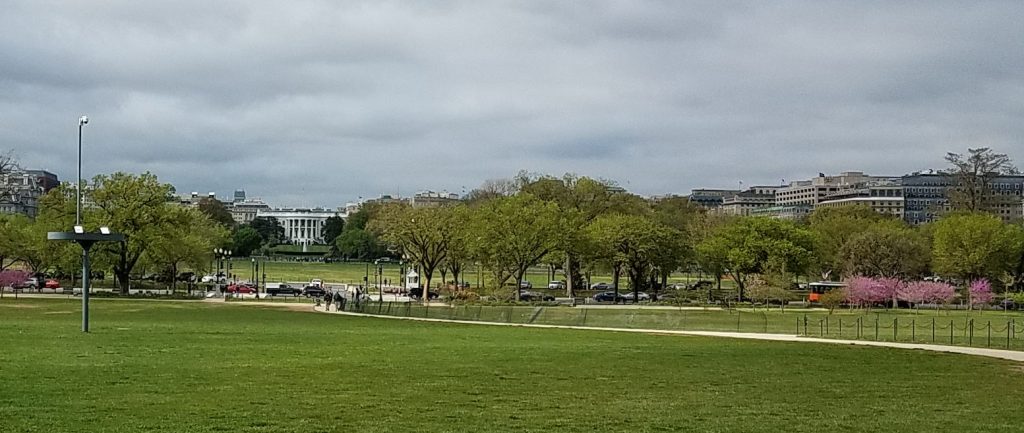
After I am long dead, I hope that anthropologist discover my fossil remains and do whatever future scientists will do to figure help understand humanity. Never know what that might be.
I went to a lecture today at Smithsonian about ancient DNA. The speaker was David Reich who wrote a book, “Who We Are & How We Got Here,” about the subject. The field is been revolutionized in the last few years, so much of what we thought we knew has been overtaken by events. In the last ten years, testing DNA has become 100,000 times cheaper. Scientist can now test DNA from ancient human remains and compare them with other ancient and modern populations.
One surprising finding is that modern populations often are not much related to the “original” inhabitants of their regions. People have always moved and they have always mixed. This brings us to another truth. Groups as we define them just did not exist in the past. The mixing and moving has created our modern populations and they are never permanent. To take the dust to dust analogy, people and our ethnicity are based on dust. They come together for a short time but are recreated again and again each time in different ways.
We know a lot more about European populations than others because the science has been concentrated in Europe. In “deep time” – 5000 – 6000 years ago – there are four identifiable groups. Back then, these groups were more different from each other than East Asians are different from Western Europeans are today. The four groups from what is now Iran, Levant, Western European hunters and gatherers and people of the steppe north of the Black Sea. These groups mixed and matched to produce today’s European populations. Genetic diversity has been declining as people mix.
An interesting finding was that Western European populations are related to American native populations. Did they cross the Atlantic? Probably not. Rather both Native Americans and Western Europeans had common ancestors in a “ghost population.” This was a population in what is now Russia that is no longer extant as a population, but has left its genes in populations in America and Europe.
When you talk about genetics, somebody will bring up race. Reich was questioned about why he did not use the term. He explained that the term is meaninglessly imprecise but loaded with imputed meaning. Genetically, there is no such thing as a race, at least as we define it. He mentioned categories like “Hispanic” as especially meaningless from a genetic point of view.
The more we learn about genetics, the more we see that all human categories are impermanent. I like this idea, since it fits my historical conception. My belief is that when anything passes from living memory, it become the common heritage of humanity – good, bad or neutral, we are all one people.
My first picture is the lecture, held at the Smithsonian Indian Museum. Next two pictures are the Museum of the American Indian and last is the White House.



